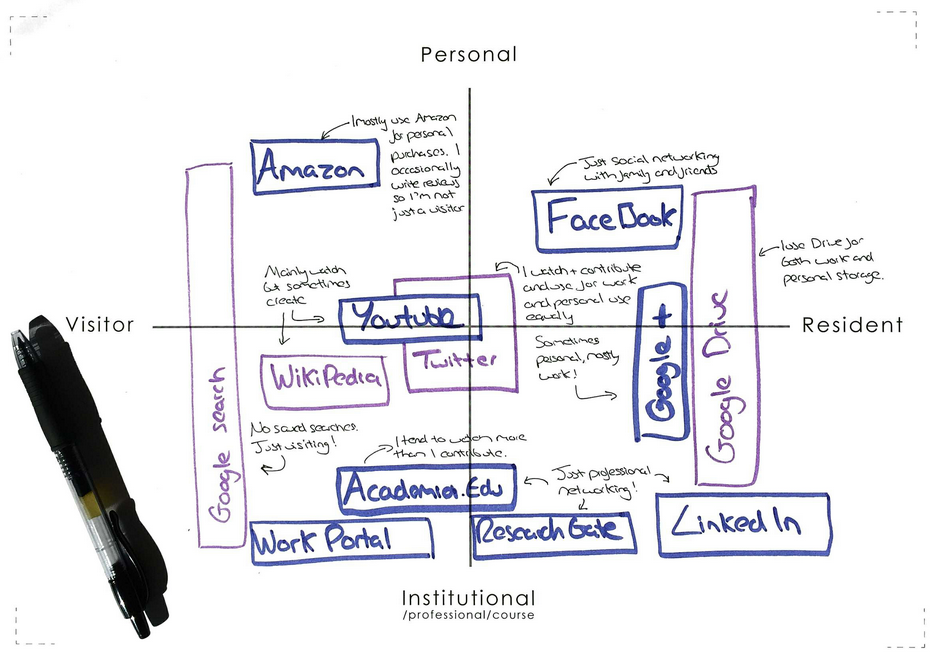The Your digital world page introduced the concept of digital footprints and digital identities. To help you understand this in your own context, it is useful to map your online activity.

Understanding mapping process
To start the mapping process, you first need to understand your activity in the terms of ‘residents’ and ‘visitors’:
When someone is a resident, they are highly visible within the platform they are using. This visibility is often through having an active and developed profile. Such individuals often have an ‘online persona’ and are often grow comfortable using platforms that they reside within. White and Cornu (2011) propose residents see the web as a “park or building… a network of individuals or clusters of individuals who in turn generate content”.
When someone is a visitor, they have a low visibility within the platform they are using. This is because the web is used as a tool, only when the need arises. As such, the use of the internet is driven by need, unlike residents who may spend time online simply maintaining their profiles. White and Cornu (2011) propose visitors see the web as an “untidy garden tool shed… a set of tools which deliver or manipulate content”.
Resident or visitor status relies on what you do, not who you are. This moves the focus away from age and the assumption that people born into technology (or digital natives) possess a familiarity with technology. At times, we are all the visitor, especially when we are just using an online tool such as a simple internet search while we are not logged in. The times when we act as resident often represent an extended engagement and a conscious element of sharing.
Mapping your online interactions
Considering to what extent you are a resident or visitor can really help you to understand your use of the tools and platforms available on the internet. However, to properly map your online interactions, you also need to consider your motivations and uses of such tools and platforms. To do this, you need to add an additional dimension to the map to demonstrate the extent of your personal use compared to your work/study/business use.
Tip: Quickly start your own map by downloading the Mapping Template
Annotations
You can reflect on the mapping process by annotating in a different colour. It can help you to define why and how you are using each of the services you choose to include




